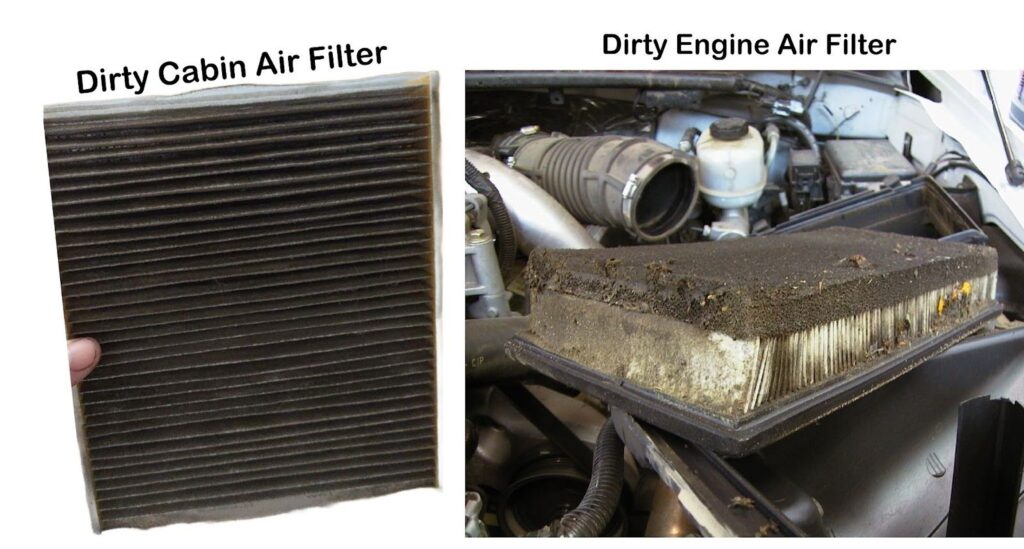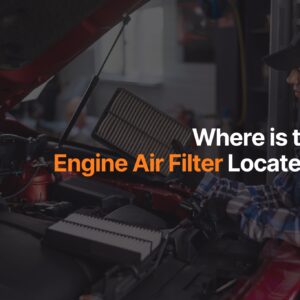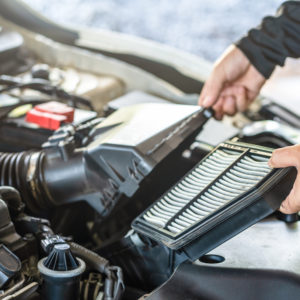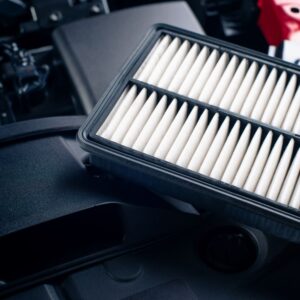Q: What Does an Air Filter Look Like?
A: It depends on whether it’s an engine air intake filter or a cabin air filter. Engine air intake filters are usually inside a black plastic box beside the engine. The filter comes in a flat, boxy, or conical form. Cabin air filters look similar but are smaller and thinner.

Most vehicle engine air filters use pleated paper, cotton, foam, or other synthetic materials to capture pollutants. When installed, these types of engine air filters will look like an accordion. They’re typically white or off-white and tend to get dirty and darken over time. When engine air filters get dirty, they can negatively affect your engine’s performance.
Performance-oriented air filters use metal mesh that’s covered in oil. These performance air filters can come in various colors.
Cabin air filters clean the air circulating inside your cabin using pleated paper or synthetic fiber. Cabin air filters look very similar to the air filters you’ll find in your home air-conditioning units and can be white, gray, blue, or black.
Accessing both types of filters is relatively simple. Some vehicles will require a screwdriver, but some air filters can be replaced with no tools at all since they just use a screw.
Engine air intake filters remove any debris or large particles in the air before it enters the engine. Without an air filter, the engine’s internal components can get damaged from dirt, dust, or debris, which can cause a range of issues and will be expensive to repair.
Filtration Guide
Engine Air Filters
- Standard paper filter ~20–40 microns Captures most dust and debris
- High-efficiency filter ~5–10 microns Better filtration, may reduce airflow
- Performance filters ~50+ microns Prioritize airflow over fine filtration
Note: Human hair is about 70 microns in diameter. Pollen ranges from 10–100 microns. Dust particles can be as small as 2 microns.
Cabin Air Filters
- Standard particulate filter (~5–100 microns): Blocks dust, pollen, mold spores
- HEPA cabin filter (down to 0.3 microns): Captures 99.97% of fine particles
- Premium filters (~0.3–3 microns): Can trap virus aerosols and exhaust particulates
Microns Reference:
- Pollen: 10–100 microns
- Mold spores: 3–80 microns
- Bacteria: 0.5–10 microns
- Virus aerosols: ~3 microns (not individual viruses, which are smaller)
- Exhaust particulates: 2–10 microns
- Odors & gases: ~0.0001–0.0005 microns (absorbed by activated carbon layers)
Note: Some filters also include activated carbon or electrostatic layers to trap odors and ultra-fine particles.
Any information provided on this Website is for informational purposes only and is not intended to replace consultation with a professional mechanic. The accuracy and timeliness of the information may change from the time of publication.

































